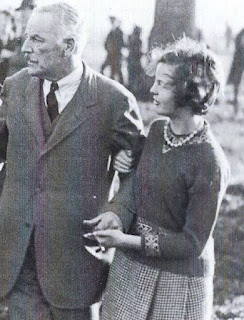Ely Cathedral is more than a place of worship, it’s also a repository of early English and Norman history. Beneath the glow of stained glass, exploring niches and chapels, you absorb more than you fully realise, the process addictive
One of my favourites was St Edmund’s Chapel
Edmund was a C9th king of East Anglia, killed by the Danes in 870 for refusing to renounce the Christian faith. Tradition says that the Danes shot him with arrows and beheaded him for good measure. Legend also claims that a wolf found and protected the royal head until his friends arrived.
The last resting place of the relics of Saxon Christians of the 10th and 11th Centuries
There is also a space dedicated to early Saxon benefactors and a once famous hero, one now largely forgotten. I was going to skip the Saxon worthies, largely bishops, but then I fell madly in love with their names:
Wulfstan Archbishop of York, died 1023; Osmund, a Swedish Bishop died 1067; Aelfwine, Bishop of Elmham, died 1021; Aelfgar, Bishop of Elmham, died 1021; Eadnoth, Bishop of Dorchester, died 1016; Aethelstan, Bishop of Elham died 996; Bryhtnoth, Eoldorman of East Anglia, died 991
Bryhtnoth is of particular import, being the famous Saxon hero who fought the Danes to the death—his final battle is commemorated in the well-known Old English poem, The Battle of Maldon. It was quite a battle. His chest contains a headless skeleton.
The Lady Chapel
The mirror below allows a close up reflection of the ceiling—see below
The Lady Chapel is dedicated to Our Lady, the Blessed Virgin Mary, Mother of Jesus. It is the largest chapel of its kind attached to any British Cathedral. Its foundations were laid in 1321 and it was completed in 1348.
High up on the ceiling you can see carvings or ‘bosses’ dating back to the C14th. They are rich in imagery depicting foliage, human faces, animals and mythical creatures. The roof is also decorated with roses. My wife, being from Yorkshire, was a bit miffed by the paucity of white roses, I think I counted only two. Being Lancastrian, I was reasonably content with the sheer number of red roses until I realised the issue was meaningless, since the Chapel was completed in 1348, a hundred years or more before the War of the Roses began.
What then do the roses signify? I accosted a tour-guide who gavely informed me that he already had a tour in tow and I wasn’t part of it. Scousers haven’t yet learnt the meaning of no, so I persisted with the question. He relented with courtesy, saying he was just about to inform his group on that same topic. The red rose is associated with Mary as Queen of Heaven and is a symbol of her great love. The white rose is associated with Mary’s virginity, and so is a symbol of her purity.
In this context, the ceiling reflects Mary’s greater glory as Queen of Heaven, the two white roses reminding us of her purity. There are hidden continents of symbols lost to us now but familiar to the medieval Christian pilgrim.
By the C14th, Mary had become an important focus of people’s devotions, especially women. The elaborate carvings around the walls depicted the Virgin Mary’s story, and pilgrims would have used these to aid their prayers.
And then came the Reformation and the insufferable Dean Goodrich; religious buildings and art were defaced or demolished. The majestic, rich interior of Ely’s Lady Chapel was a particular target for damage. Today, the rawness of the Lady Chapel, is a direct result of the legacy from that time; the empty wall niches, headless statues and faint traces of paint, are all that survive. Although, if you look hard, one statue survived the carnage along with its head.
After 1556, the Lady Chapel became Holy Trinity Church and was used as a parish church for the people of Ely. The walls were whitewashed and its stained windows replaced with plain glass. I'm sure God was delighted.













































